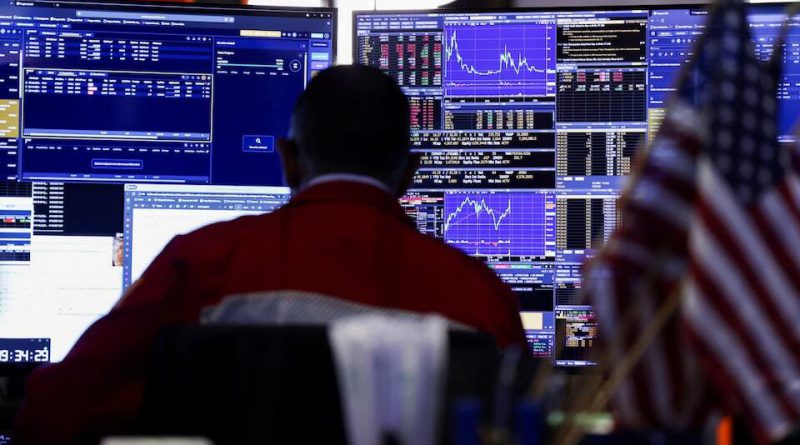Global Bank Stocks Slide as Credit Concerns Spark Market Reality Check
Renewed fears over U.S. regional bank credit quality ripple across global markets, reminding investors of 2023’s volatility — but analysts see resilience and opportunity amid the correction.
Global Markets Face a Wake-Up Call
Global financial markets experienced a sharp jolt this week as fresh concerns over U.S. regional bank credit risks triggered a selloff across major banking stocks.
The wave of anxiety, reminiscent of the 2023 banking turmoil, underscored the fragility of investor confidence in a year already marked by trade tensions, high valuations, and uneven economic recovery.
The latest bout of volatility began after Zions Bancorp and Western Alliance disclosed loan losses and allegations of borrower fraud, reviving worries about lending standards and potential contagion.
The news set off a chain reaction from Wall Street to Europe and Asia, shaking sentiment across global markets that had otherwise enjoyed a strong year.
Despite the turbulence, analysts emphasized that this was not a systemic crisis but a market reality check — one that highlights both the resilience and the sensitivity of the global financial ecosystem.
The selloff brought back uneasy memories of the 2023 banking crisis, when the collapse of Silicon Valley Bank sent shockwaves through global markets. However, today’s situation differs markedly.
Financial institutions, particularly in Europe and the U.S., have stronger capital buffers, improved oversight, and healthier liquidity compared to two years ago.
“The market is clearly priced for perfection,” said Bo Pei, analyst at US Tiger Securities. “This leaves sentiment vulnerable, so even isolated negative headlines can trigger outsized reactions like what we saw yesterday.”
The KBW Banks Index, tracking large-cap U.S. banks, fell 0.4%, while the KBW Regional Banking Index dropped 6.3% in the previous session. Meanwhile, European bank stocks (.SX7P) slipped nearly 3%, led by steep declines in Deutsche Bank, Barclays, and Societe Generale.
Yet, amid the selloff, several regional U.S. banks reported strong quarterly earnings, including Truist Financial, Regions Financial, and Fifth Third, which helped stabilize investor confidence.
Shares of Western Alliance rebounded 2.6% after heavy losses a day earlier, signaling that the market reaction may be more emotional than structural.
Resilience Amid the Ripples
Market experts say the root of the concern lies in isolated credit events rather than systemic weakness. “Pockets of the U.S. banking sector, including regional banks, have given the market cause for concern,” noted Russ Mould, investment director at AJ Bell. “But the broader fundamentals remain solid.”
At the same time, global investors are wary of high equity valuations and an AI-driven stock rally that some believe has inflated expectations.
The correction in bank shares may therefore serve as a healthy adjustment, allowing markets to cool before the next growth cycle.
White House economic adviser Kevin Hassett sought to reassure investors, saying U.S. banks maintain ample reserves and that officials led by Treasury Secretary Scott Bessent and Federal Reserve Governor Michelle Bowman are ensuring stability. “They are cleaning things up right now,” Hassett said in a television interview, adding that credit markets are expected to “stay ahead of the curve.”
The fear-driven selloff spread swiftly across regions. In Asia, Japanese banks and insurers saw sharp declines, while in Europe, banking and financial stocks fell nearly 3%, marking one of their worst days in recent months.
“What we see in the banks selling off overnight in the U.S., Asia wakes up to it, Europe wakes up to it, and so it spreads,” said James Rossiter, head of global macro strategy at TD Securities.
However, despite the dip, analysts pointed out that European bank shares remain up nearly 40% year-to-date, highlighting strong overall performance and profitability.
Meanwhile, gold prices hit a record high, reflecting a temporary flight to safety among investors. Yet, this move also demonstrated that investors were hedging risk, not exiting markets entirely — a sign of continued confidence in the financial system.
Credit Markets Under the Microscope
Behind the selloff lies a broader reassessment of credit market stability. The failures of two U.S. auto firms and rising private debt impairments have heightened scrutiny over lending practices and exposure.
Mark Dowding, CIO of RBC BlueBay Asset Management, noted that default rates have reached 5.5% — a figure that, while elevated, remains manageable within current economic conditions.
Meanwhile, U.S. banks borrowed nearly $15 billion from the Federal Reserve’s Standing Repo Facility (SRF) earlier in the week, reflecting short-term liquidity needs tied to Treasury settlements.
Analysts said this was a sign of prudent liquidity management, not distress. The SRF, introduced in 2021, serves as a safety net to ensure smooth cash flow and market functioning.
Despite short-term volatility, experts stress that the global banking sector remains resilient, capitalized, and well-positioned for long-term growth. The recent shakeout underscores the importance of vigilance and balanced optimism as markets navigate a complex macroeconomic environment.
“The market has been concerned about a bubble brewing in private credit for months,” said Alan Devlin, global financials research analyst at Impax Asset Management. “But this is a market that reacts first and analyzes later — and in that reaction, opportunity often emerges.”
For long-term investors, this correction may serve as a buying opportunity rather than a warning sign. As credit markets stabilize and global banks adjust to new realities, the financial sector appears ready to adapt — stronger, leaner, and more resilient than before.



